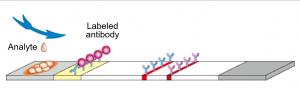|
Humans have moved constantly and have always had a desire to move. Other animals have a fixed habitat and most are found only in certain places, but humans can be seen living everywhere in the world. Humans have fewer legs than most of the other species, and neither group can move relatively fast nor travel long distances at one time. Mobility was considered a major challenge for humans. This idea is shown in many places in history. In Greek mythology, there is a being called Centaurus, whose upper body is human and its lower body a horse. In Indian religion, there is a god named Vishnu, often seen riding a bird named Garuda. Both using other methods of mobility show humans’ desire to run long and fast like horses or fly in the sky like birds. The desire for mobility is also shown in early academia, too. In the 13th century, Roger Bacon, an English philosopher, said “In the distant future, we will travel around the Earth by making an automatic cart that runs on its own without relying on horses or other animals.” It is also known that in the 15th century, Leonardo da Vinci from Italy designed a spring-powered wagon and in the 17th century, a steam thrust car was designed by Isaac Newton from England. Development of Cars This picture is of the first motorized vehicle invented in 1769 by French engineer Nicolas Joseph Cugnot for military purposes. As you can see from the picture, the horse is replaced by a steam engine. It gets power from steam generated by boiling water in a steam engine, with a crankshaft attached to turn straight motion into rotary motion to move forward. This vehicle could not be commercialized due to the lack of a brake system. The modern car we ride now began in 1883 when Karl Friedrich Benz built a motor machinery company. The company first made bicycles and other machinery and then developed into a car factory. The factory invented the world’s first gasoline powered engine car, the ‘Patent Motorwagen’ in 1885. However, the craftsmen produced the product one at a time and the price was so high that only the aristocrats and the wealthy could afford them. This problem was solved in 1911 when Henry Ford developed a special automobile factory using an assembly line. Seeing meat in a slaughter house hanging and automatically moving on a hook, he applied the technology to the car production process. He introduced the conveyor belt system, opening the era of mass production of cars. The model T, released by Ford, was the first mass produced car to become popular, selling a total of 15 million cars. Since then, cars that reflect many different tastes have become popular, and cars began to be part of people’s daily life. The number of cars around the world increased rapidly. The automobile market was eventually divided into two categories: gasoline-powered cars and diesel-powered cars. Both engines are four-stroke engines with intake, compression, ignition, and exhaust. One of the biggest differences between the two engines is the ignition method. Diesel engines inject diesel into compressed hot air like a fog mist to induce a self-explosion which makes it fuel efficient. However, diesel engines have a relatively insufficient combustion time and create extreme fine dust. The high temperature of the chamber emitting nitrogen oxide is a main cause to this problem. According to the results of one experiment, researchers found that compared with gasoline-powered cars, diesel cars emit much more nitrogen oxide, which is a cause of ultrafine dust and destruction of the ozone layer. To solve this problem, diesel cars were recommended to equip a Diesel Particulate Filter(DPF). Instead of this, Volkswagen was found to attach “defeat devices” which were designed to cheat on federal emissions tests. The incident sparked off controversy and many countries kicked diesel engines out(Diesel-gate). This helped lead to an interest in new eco-friendly cars. Engineers began to focus on the electric motor as a new source of power. When generating power, the motor doesn’t emit pollutants, is efficient, and easy to recover energy that is wasted. As it has no combustion explosion, the car can move with relatively little noise, and the size of the engine components are very small which allows engineers to simplify the structure and interior of the vehicle. *This is the interior of the Ionic 5, an electric car recently announced by Hyundai Motors. Unlike internal combustion engines, there is no transmission or console box which gives the seats the ability to rotate. Tesla Motors’ Roadster, launched in 2008, became the world’s first electric vehicle to be allowed to operate on highways. Tesla’s CEO Elon Musk has since released new models of the world’s hottest and fastest electric car, model S, 3, X, Y and made a huge success in a row.
In addition to Tesla, companies like GM and Volkswagen began producing electric cars. Electric motor is now the biggest keyword in the automobile market. But some point out that electric cars are not a fundamental solution to our environmental problems because pollution occurs in generating electricity. Moreover, the fact that battery charging takes a lot of time and the distance a car can travel between charges varies greatly depending on things like the temperature outdoors, are challenges an electric motor has to overcome. So, how will future human mobility change? Experts say it is necessary to pay attention to hydrogen cars. They are considered the most eco-friendly car because when hydrogen and oxygen react they create only water as exhaust. In addition, unlike electric vehicles, the time to fill the hydrogen tank is very short, within five minutes, and the cost of hydrogen is cheap, which could make it a popular choice quickly. Not only is the power source to run vehicles changing, but the way cars operate is expected to change significantly. Unlike cars that are vulnerable to traffic jams, the development of drone taxis flying above streets is a possibility. To relieve fatigue from driving, research on self driving cars by AI is being developed.
How did cars change our culture? Technological advances make many changes in the social environment, and cars were no exception. Karl Benz’s wife, Bertha Benz, traveled about 105 kilometers from Mannheim to Pforzheim in August 1885 riding a Patent Motorwagen with her children. On the way, Wiesloch ran out of fuel and bought a solvent that had similar chemical properties to gasoline, from a pharmacy, technically making that pharmacy the world’s first gas station. After the popularization of the Ford Model T, a surge in demand for fuel led to the modern gas station, the first being in Saint Louis in 1905. As the number of cars increased, the number of accidents increased, so the concern over safety rose between riders and pedestrians. To help solve this issue, a modern-day road sign system was introduced by the Italian Touring Club in 1895. Four signs (bump, curve, intersection, grade-level railroad crossing) were adopted by nine European governments using picture symbols. Also, in the 1910s, various traffic laws emerged and penalties were imposed on speed regulations and drunk driving. Social atmosphere also changed dependent on cars. In the 1920s and 1930s, luxury cars were popular as a symbol of wealth. In the 1950s, cars represented individual freedom, which meant people could spend time away from traditional meeting places, or create their own space to be themselves. As teenagers owned cars, they owned new spaces away from their parents, which helped create a new culture for them. The musical Grease or the movie American Graffiti are good examples of what a car could do for relationships teenagers had with friends or the opposite sex when they owned a car. Technology like cars have helped overcome human limitations and changed the way we live. It is worth looking forward to how future mobility will change and how that will affect our lives towards a better future.
|
Chung Yeongyu ygchung00@naver.com
<저작권자 © 홍익대영자신문사, 무단 전재 및 재배포 금지>





